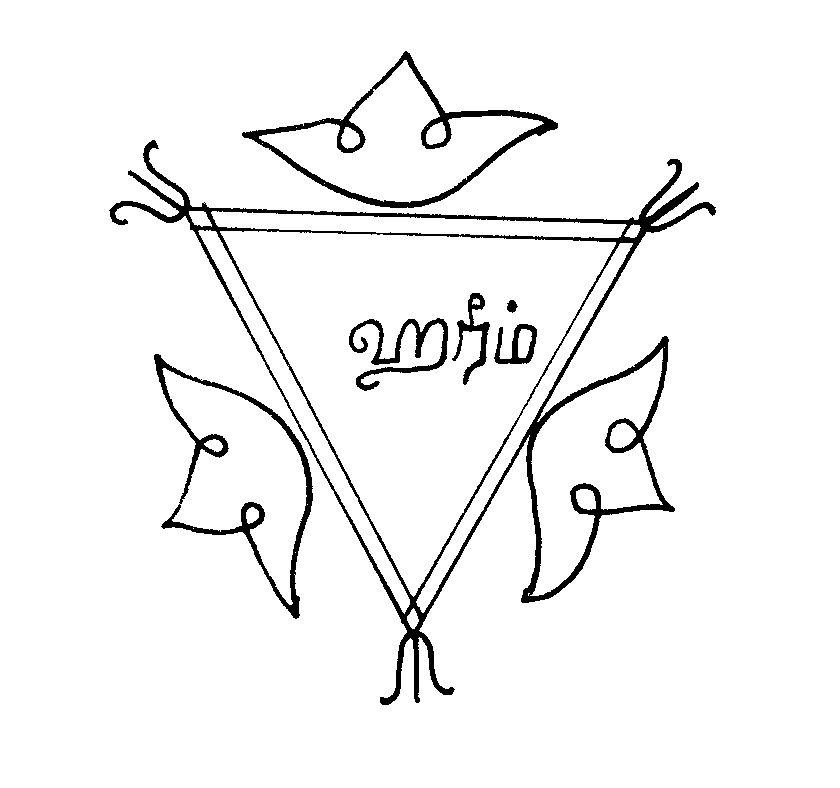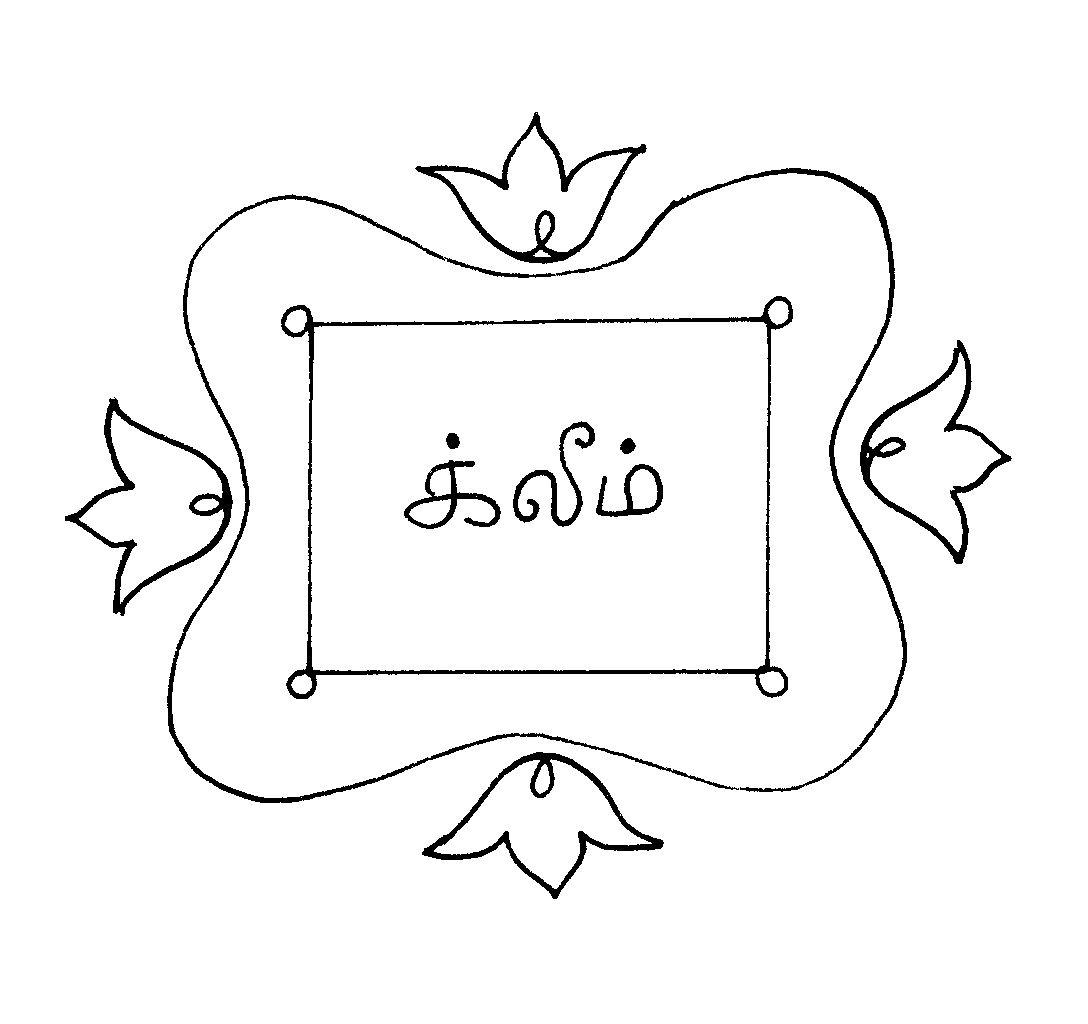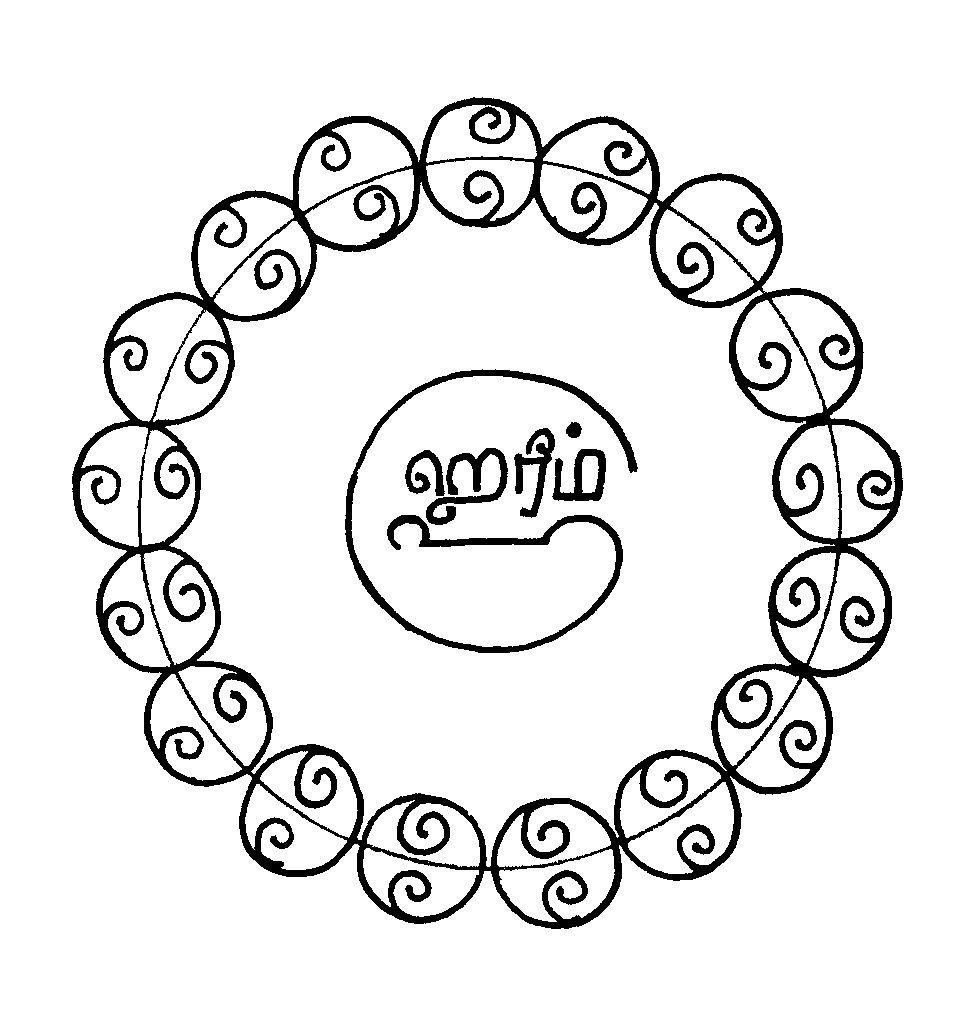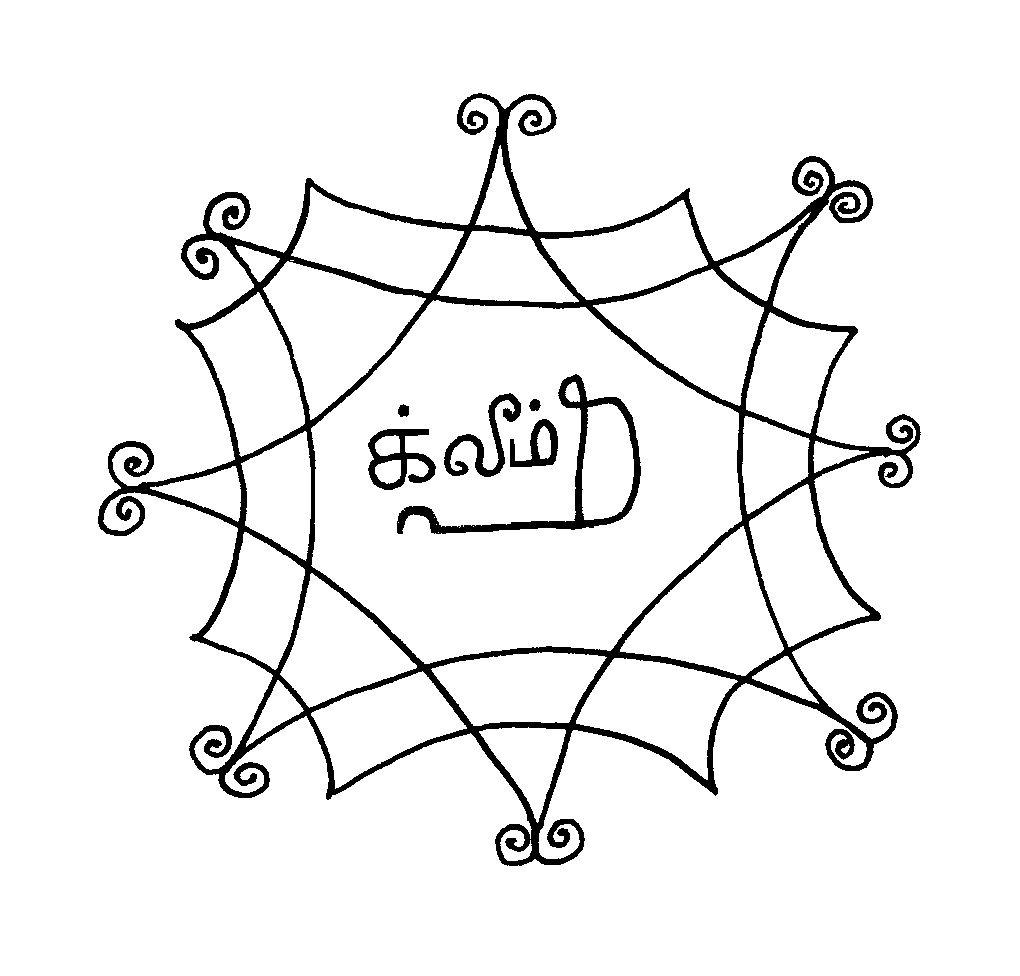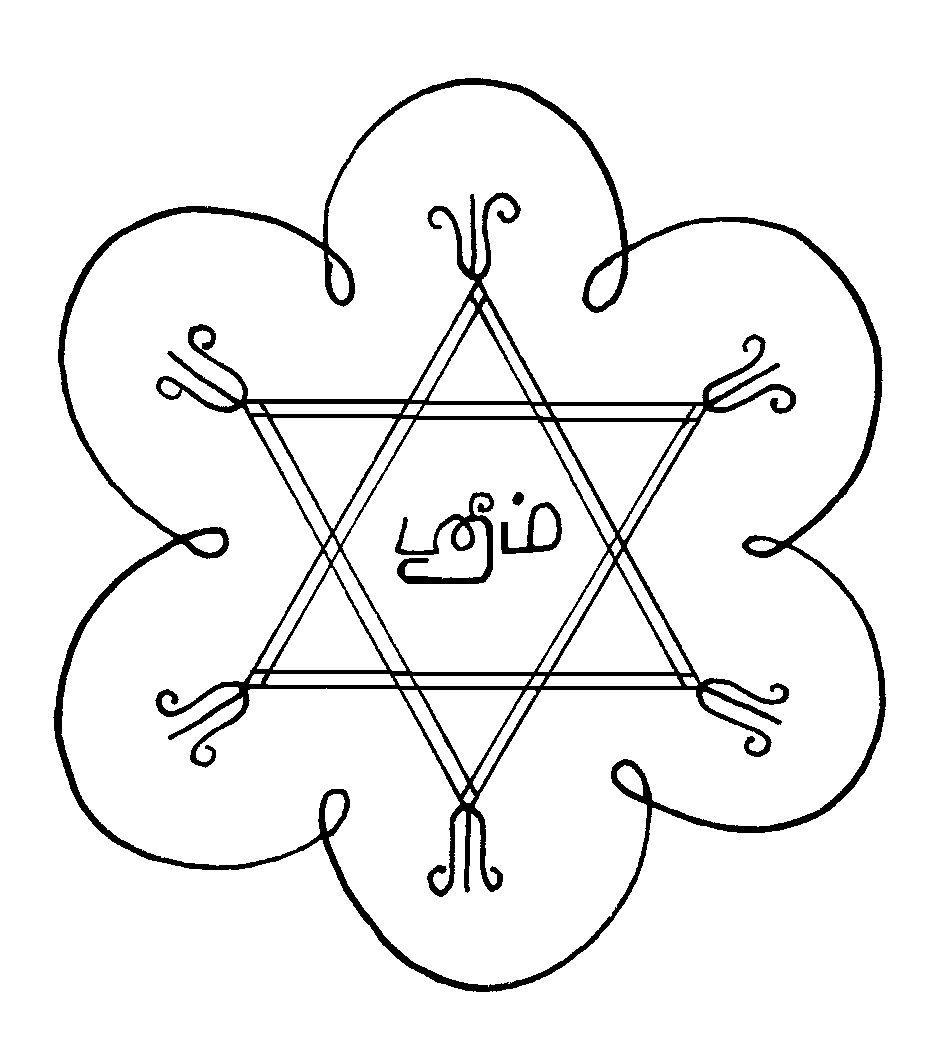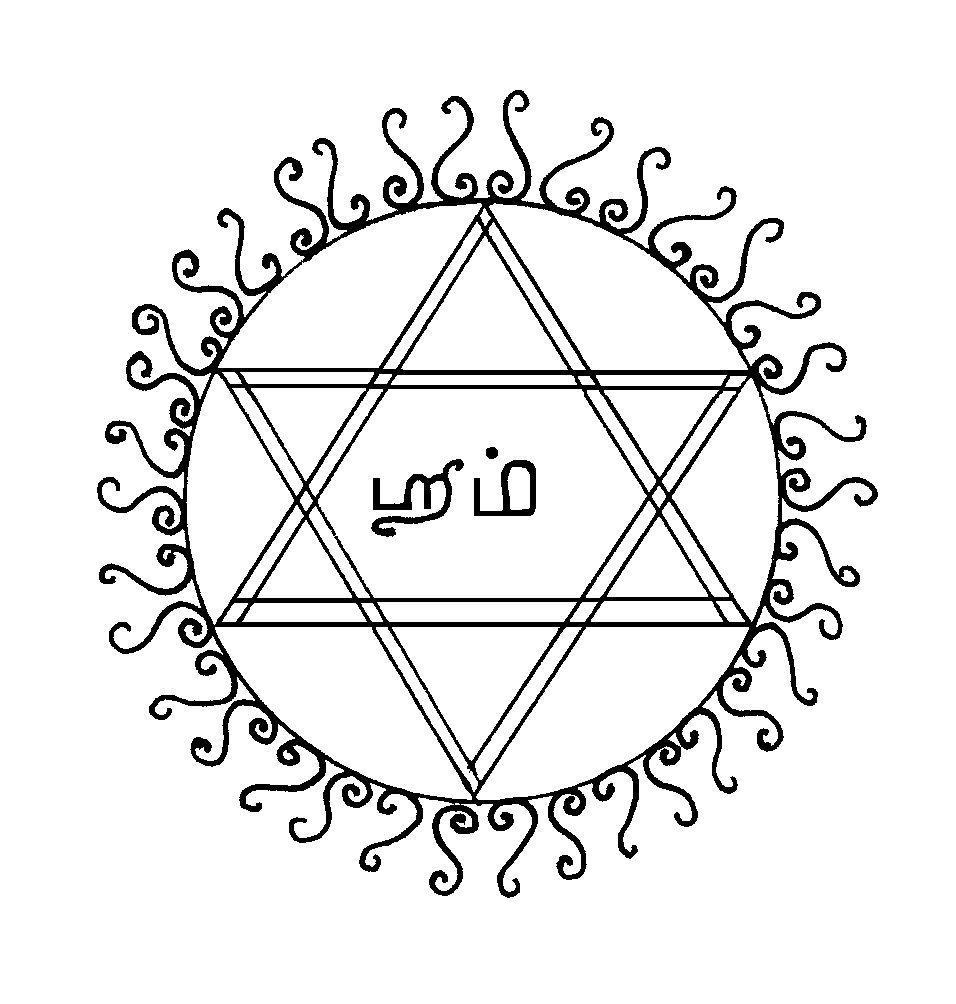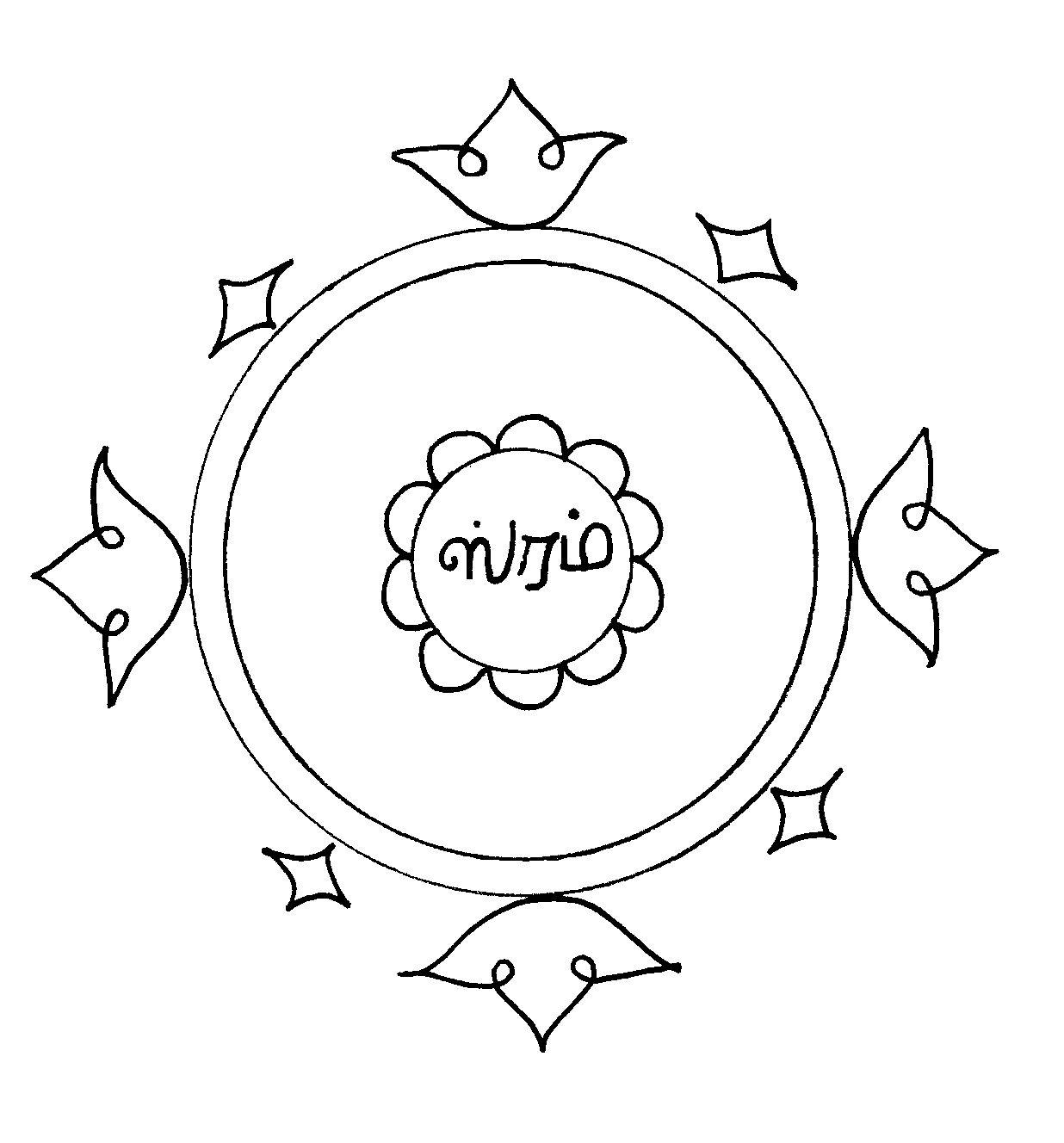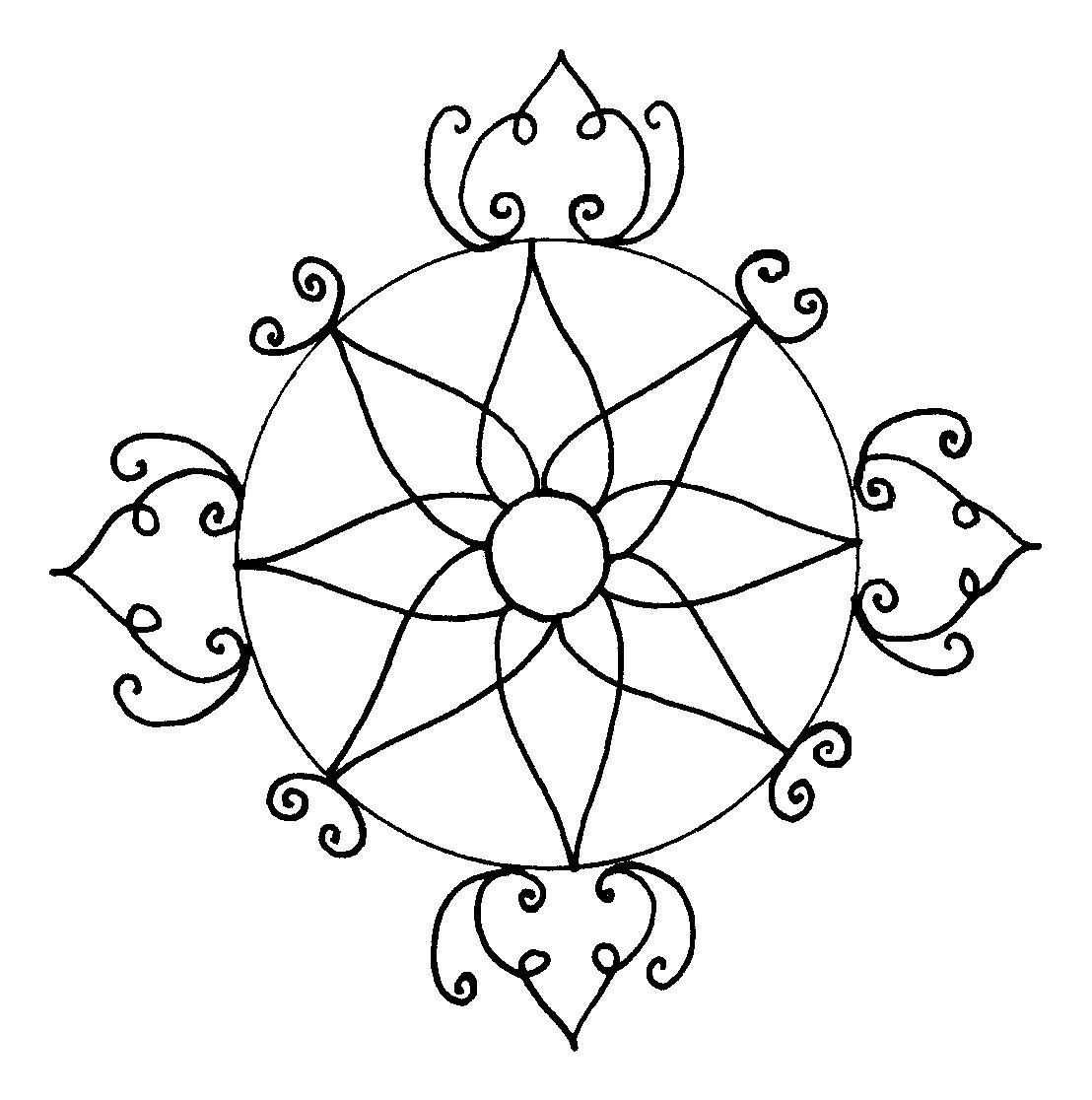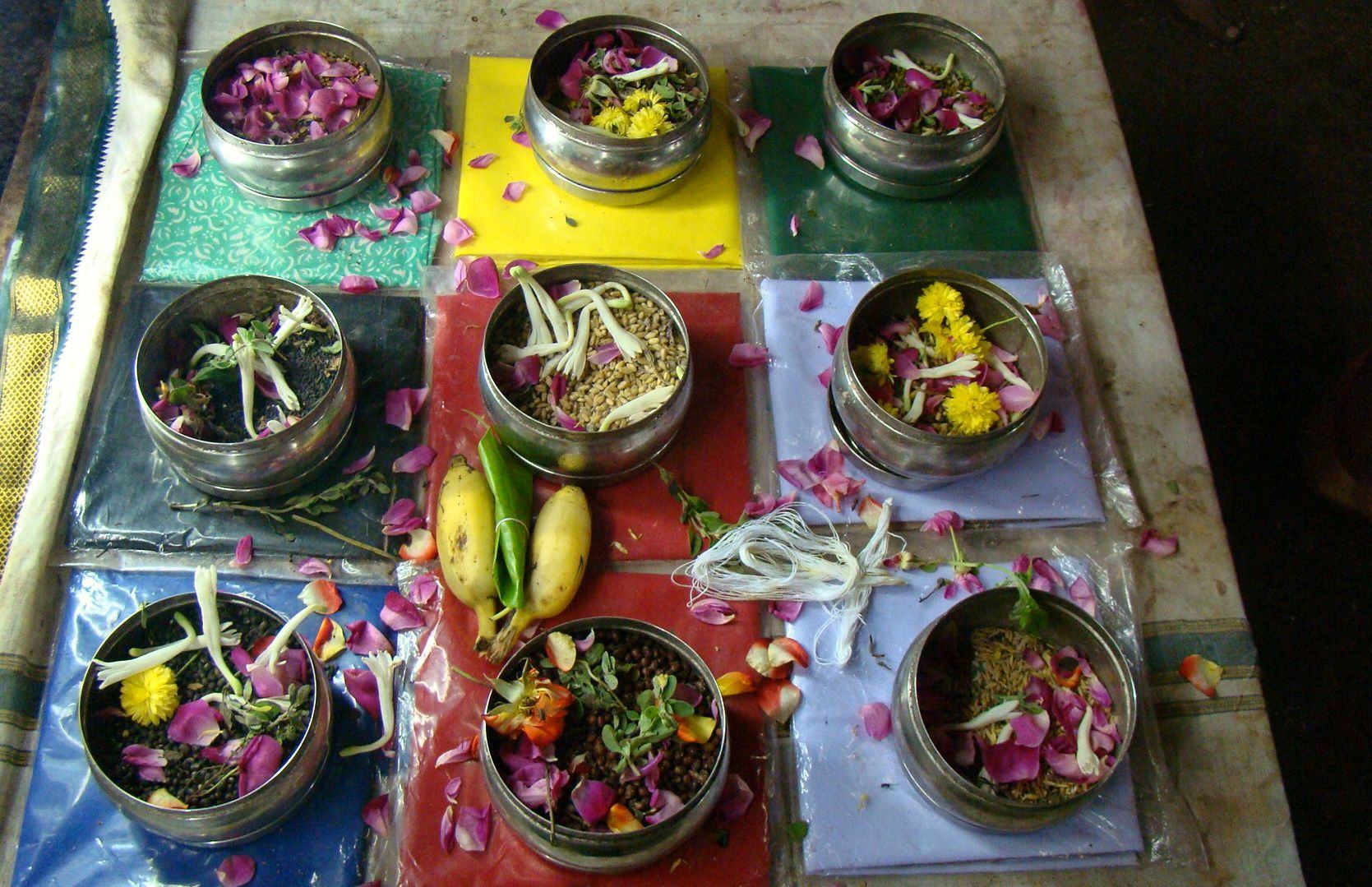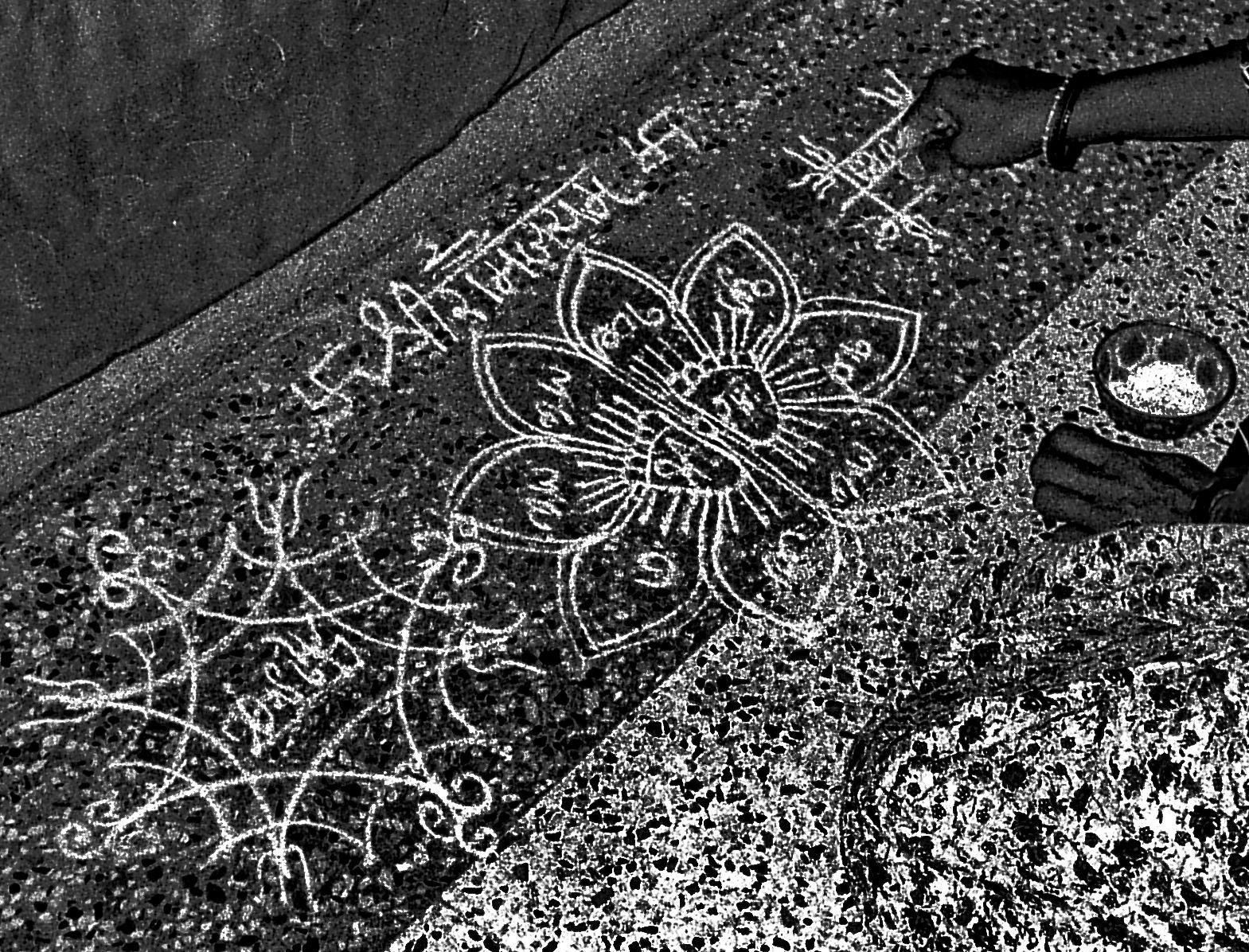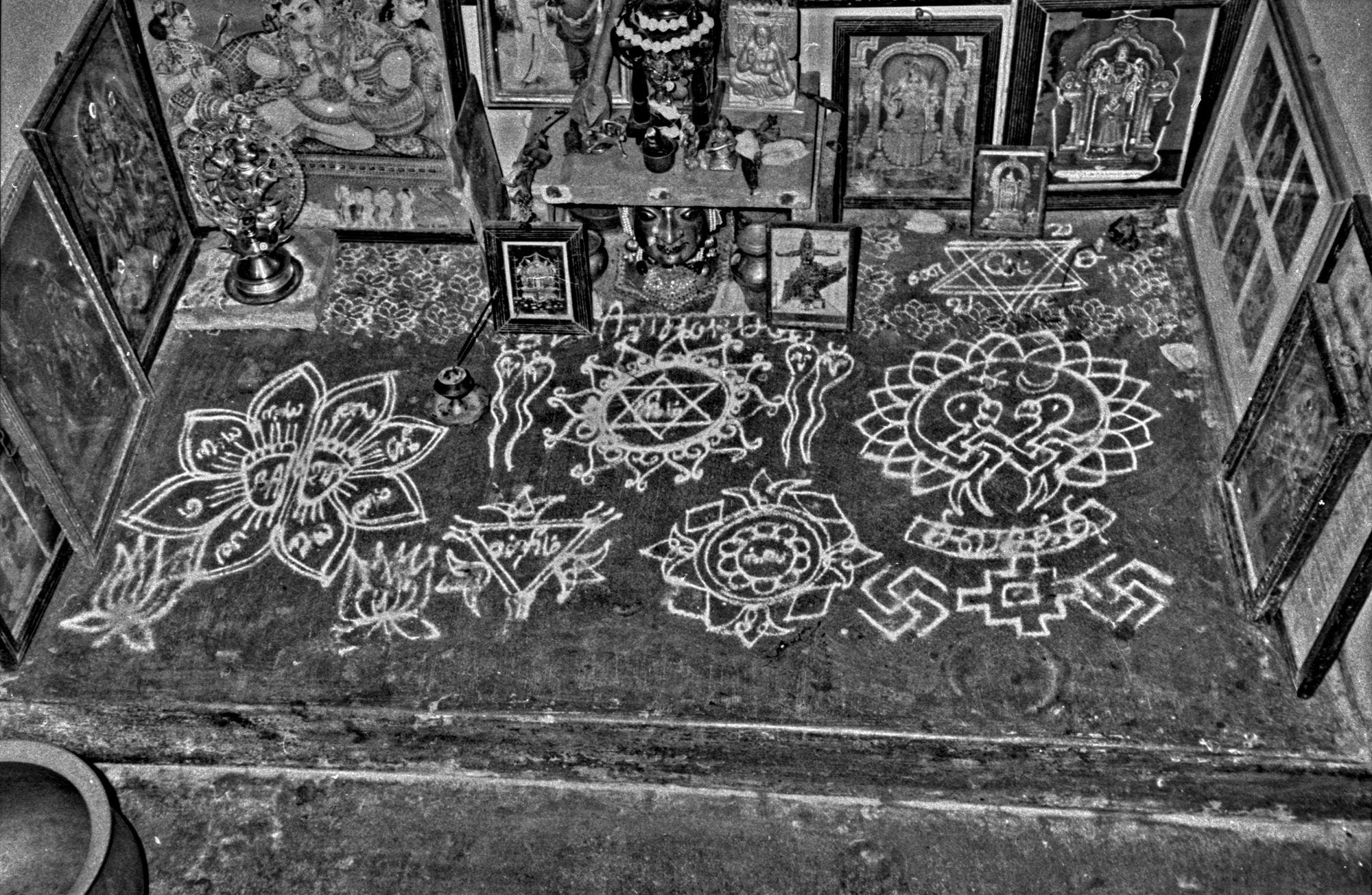The household deities — part 2
Besides Lakshmi, other gods are also worshipped: Agni, the god of fire; Yama, the god of death; Navagraha, the nine planets as well as snakes in the form of diagrams etc.
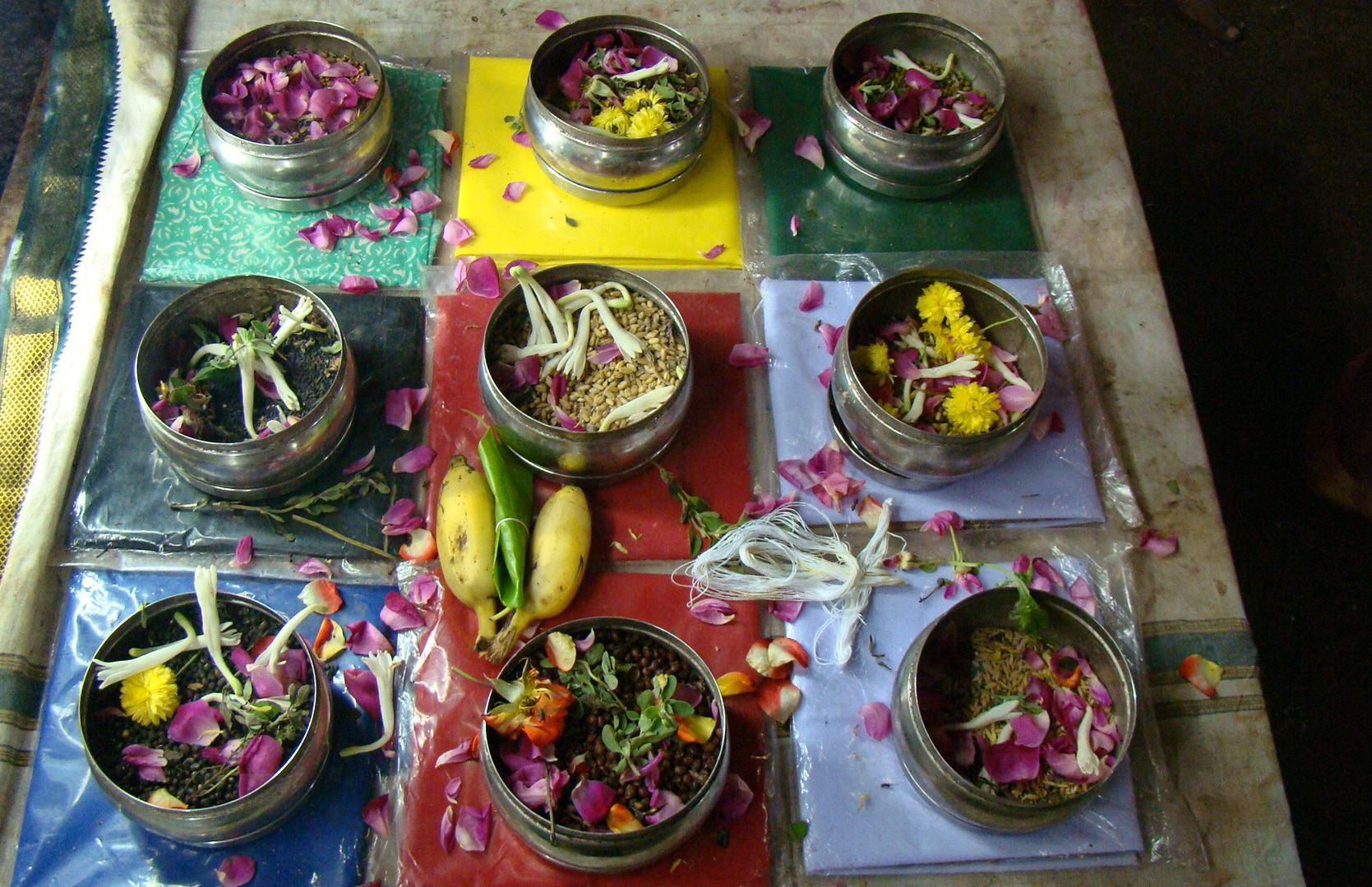
Agni, Yama and Kubera
Besides Lakshmi, other gods are also worshipped: Agni, the god of fire; Yama, the god of death; Navagraha, the nine planets as well as snakes in the form of diagrams. They are drawn in the puja room, or in a niche inside the kitchen.
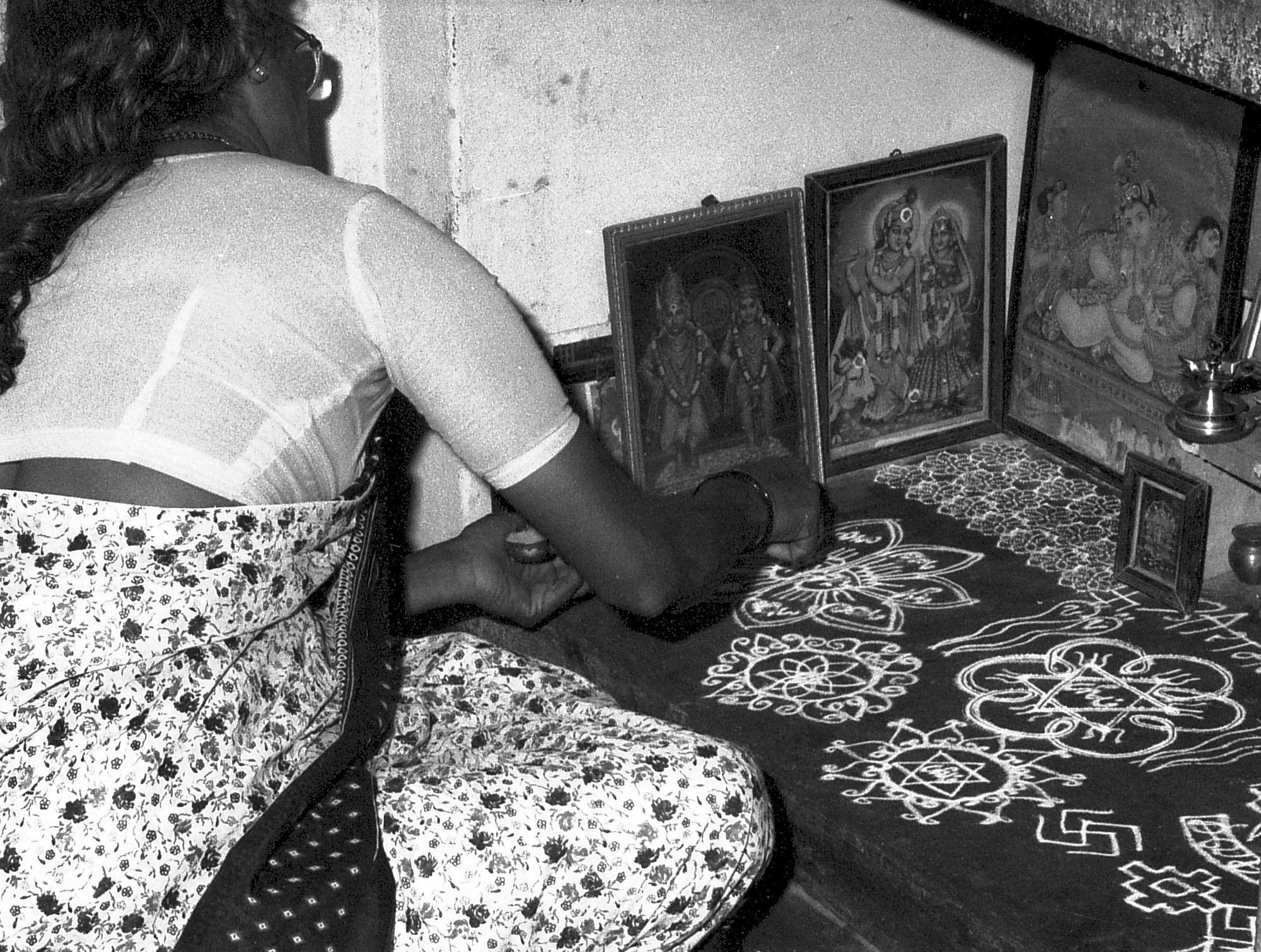
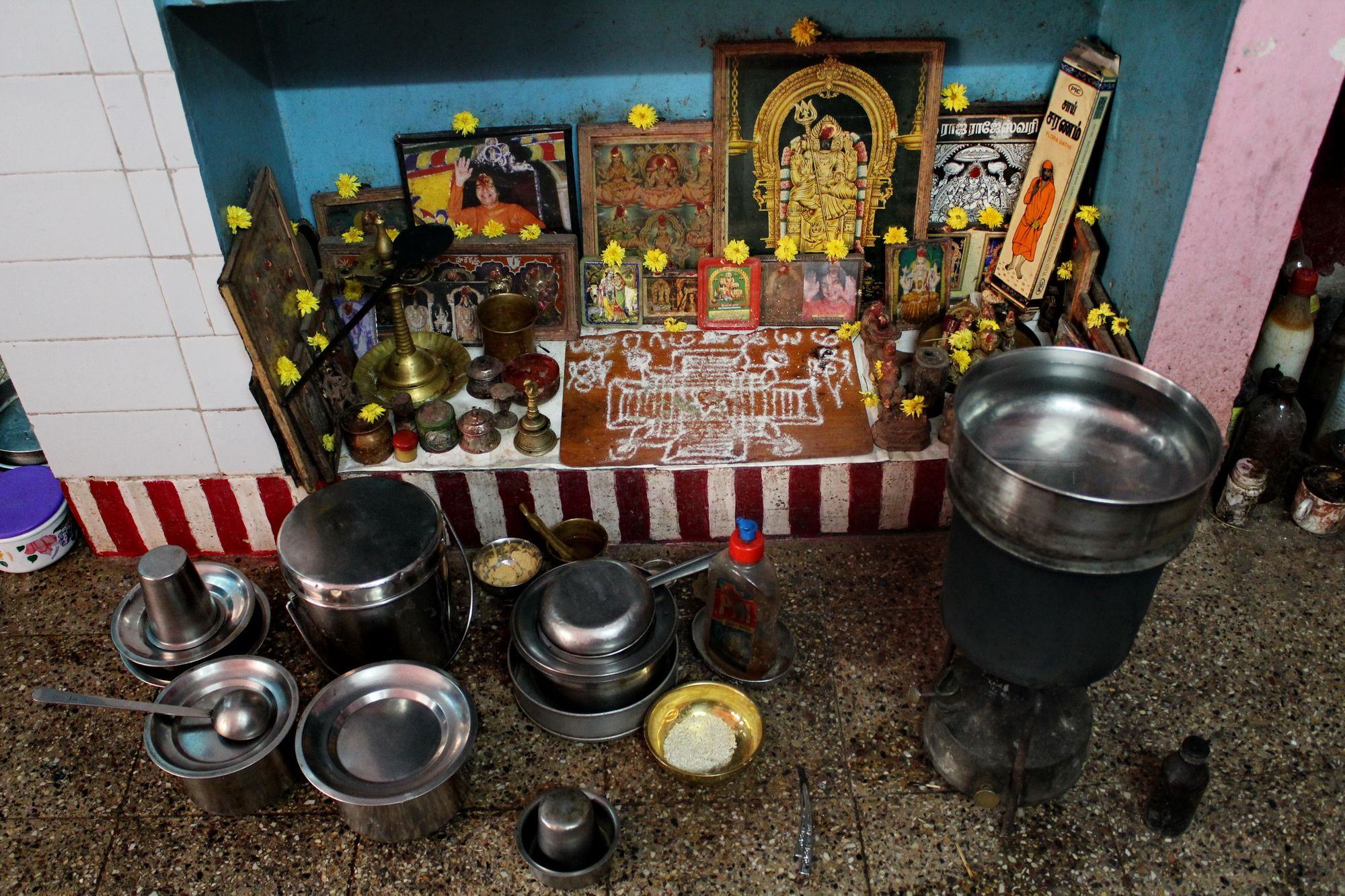
Kubera, the god of wealth and one of the eight dikpalas, or guardians of the directions of space according to Hindu cosmology, occupies a central place. He governs the North, where opulence reigns – in contrast to the South, which is Yama’s domain: death. He has a plump figure and is seated on a pot full of treasures, and often found inside the puja room is a magic square of order three, symbolising him. This magic square, drawn on a board, is considered to be very powerful. Kubera fills granaries with grain, grants great rewards to those who worship him, and reveals the path towards prosperity.
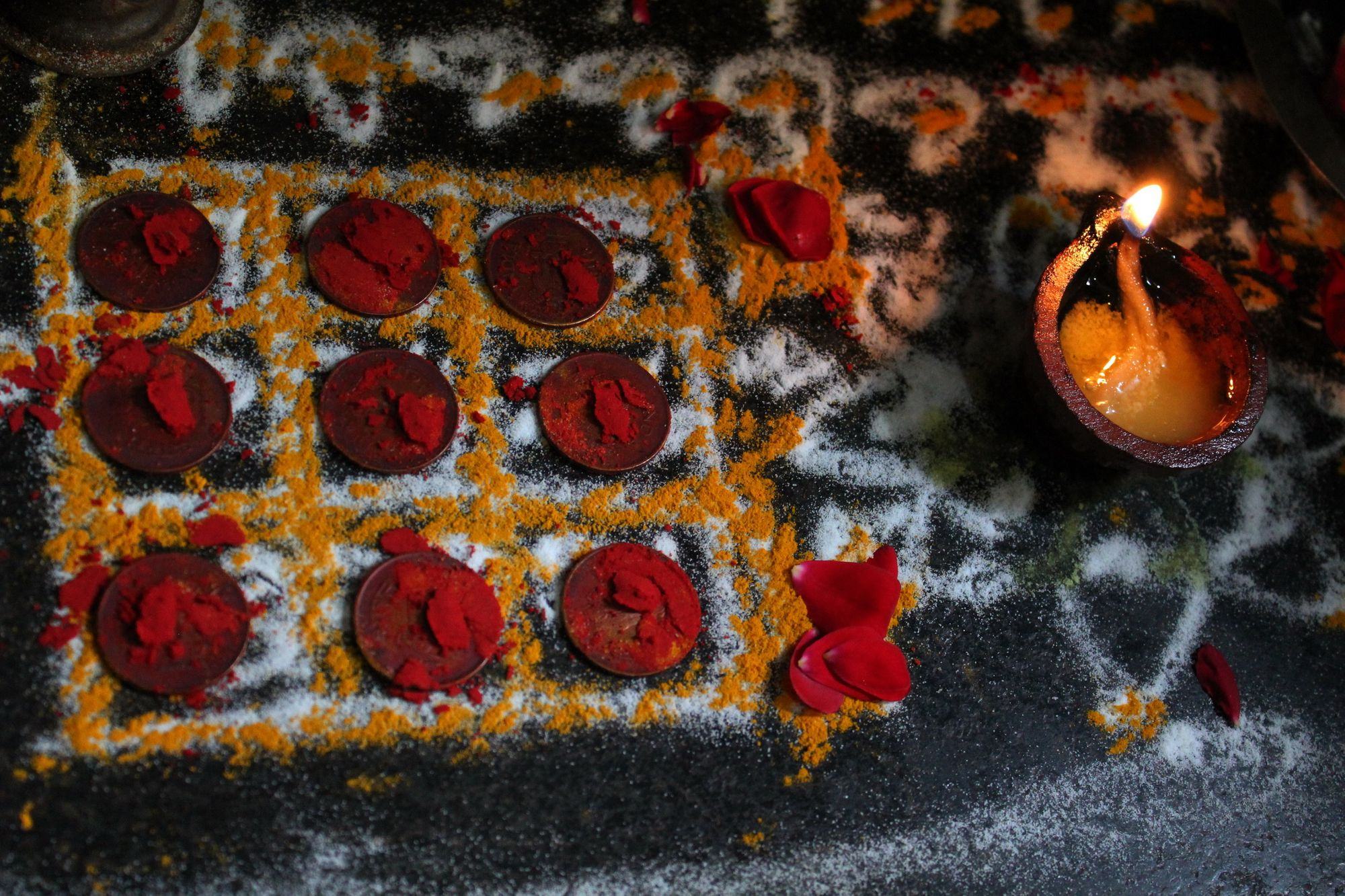

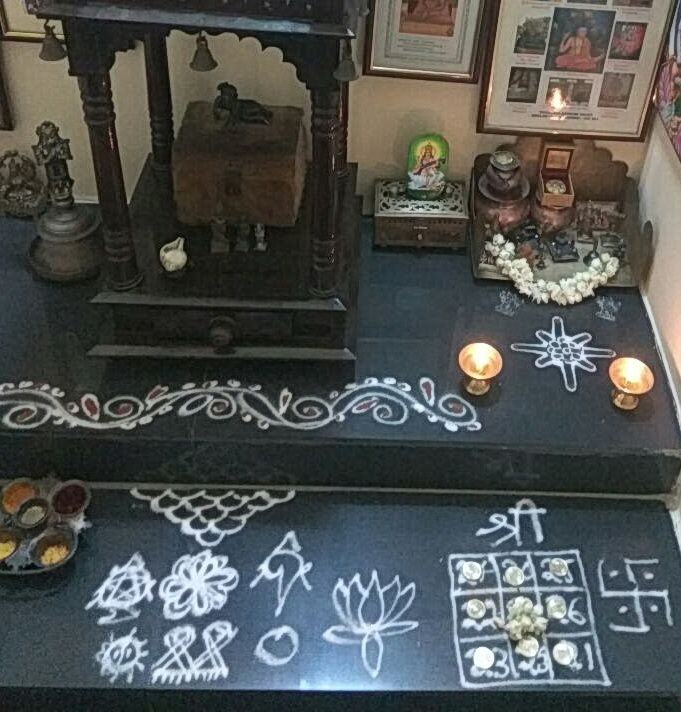
Yama and Mrityunjaya
To keep death away and develop the inner strength necessary to endure terrestrial burdens, a triangular pictogram supported on a curved line represents Mrityunjaya, a form of Shiva, and is considered by some to be an incarnation of Hanuman, the monkey god. To understand this kolam and its dual symbolism, we needed to learn more about Hanuman. He is incredibly powerful and is the hero of the Ramayana for helping Rama defeat the demon Ravana and rescue Sita, Rama's wife. His loyalty to the divine couple won him immortality and eternal youth. The following scene from the epic tells how Lakshmana, one of Rama’s brothers, is wounded in combat by a poisoned arrow and only a healing herb from the Himalayas can save him. Hanuman is sent by the royal doctor to find the plant and flies off towards the north. Unable to find the medicinal plant, he lifts the mountain and carries it back to the battlefield.
The pictogram thus represents the existential turmoil embodied by the mountain-triangle, while the prayers to be offered to the holy monkey god Hanuman are symbolised by the curved tail-like line.
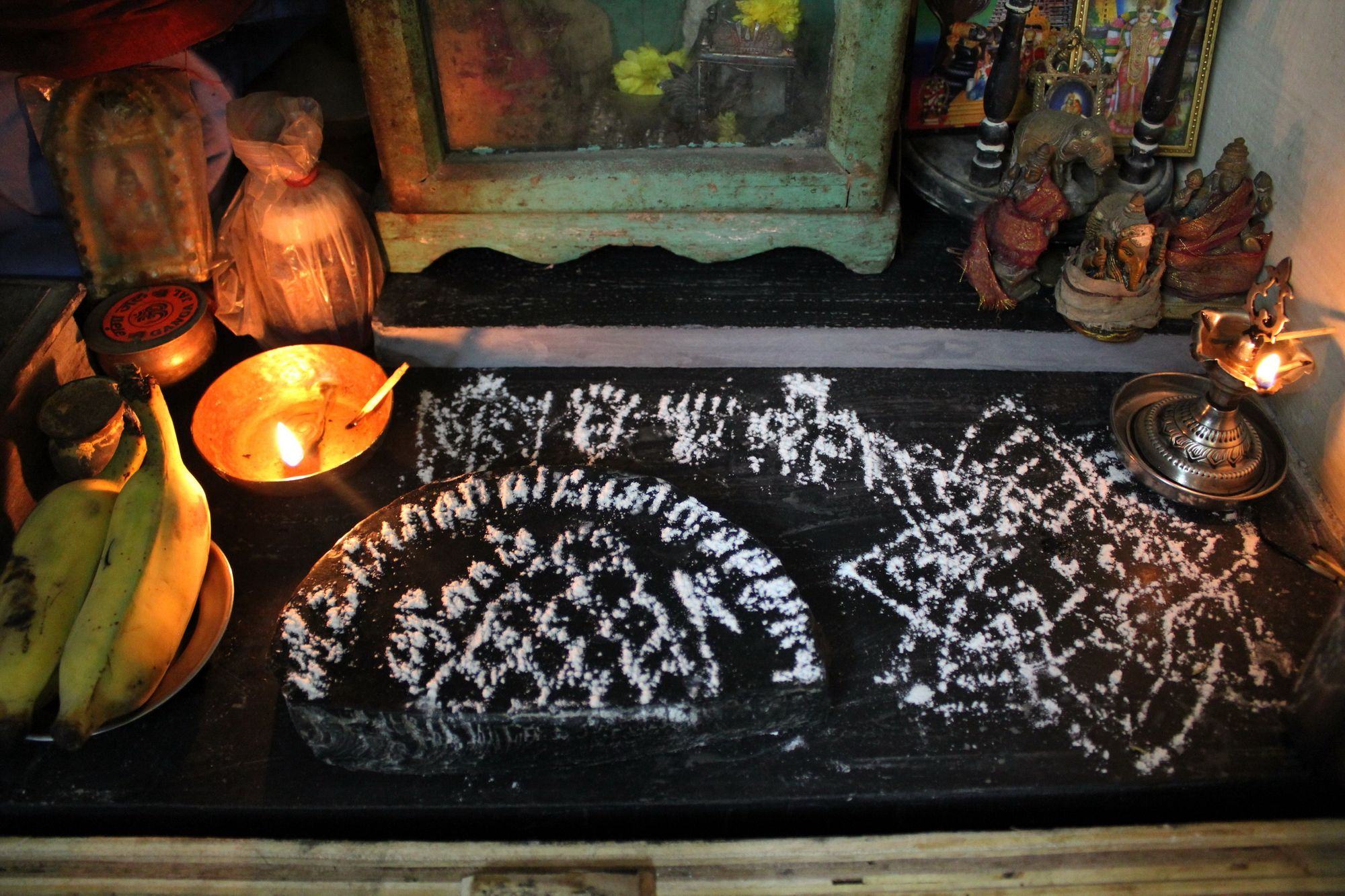
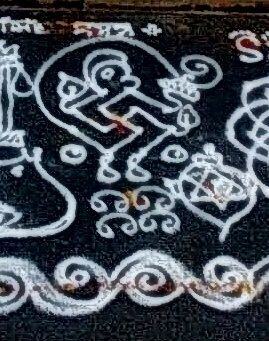
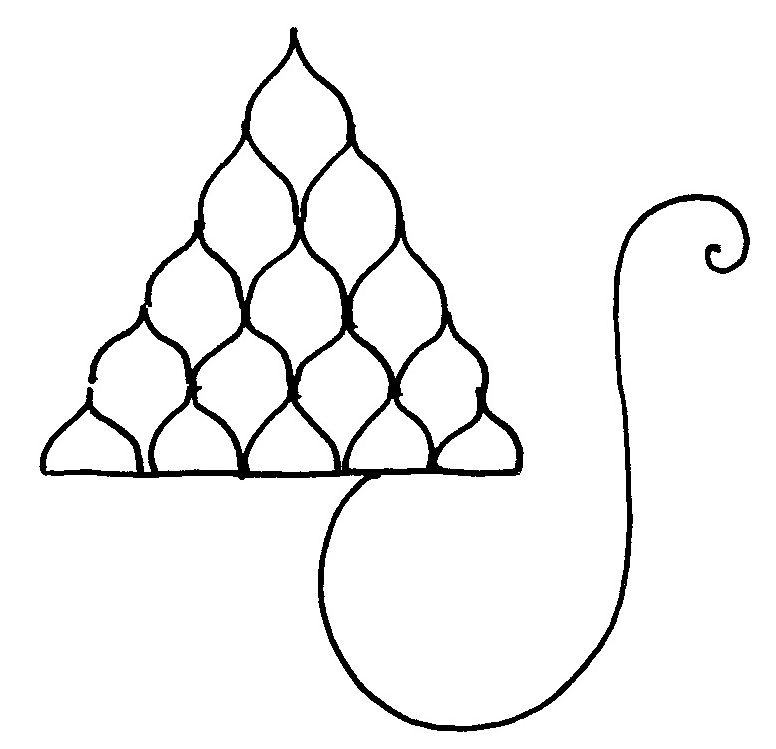
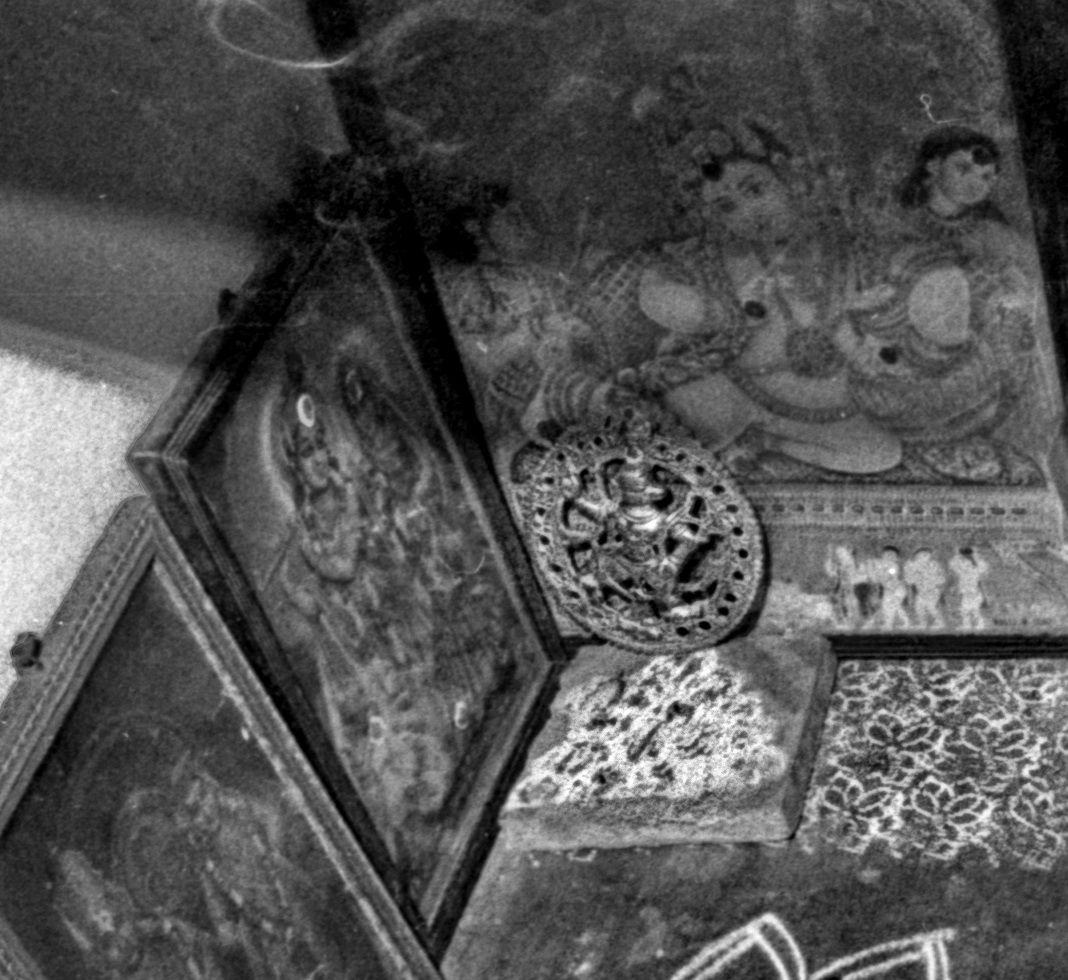
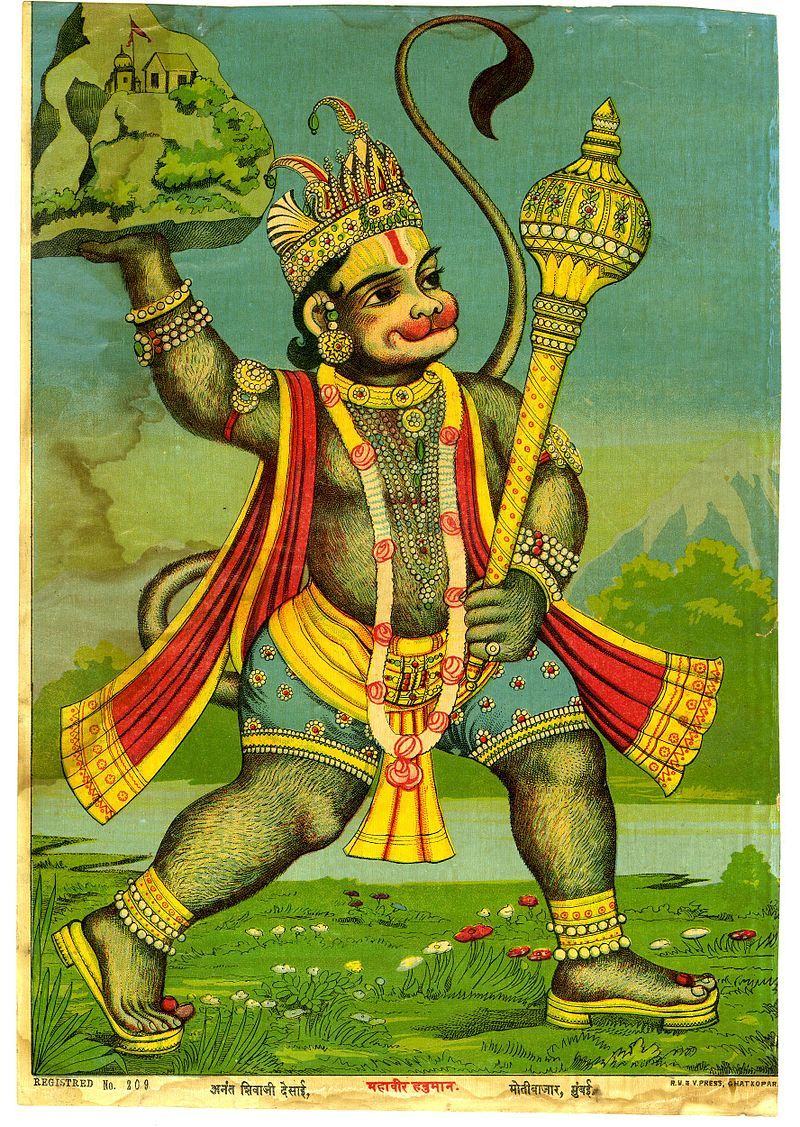
Navagraha, the nine planets
The days of the week and their respective planets or graha are also found among the household idols. Literally, the word graha means "seizing, laying hold of, holding" and is associated with the word planet. In addition to the seven main planets, there’s also Rahu and Ketu, representing the north and south nodes of the moon, or the karmic nodes. These planets are worshipped as gods in temples across Tamil Nadu. They are often placed on a separate pedestal facing outwards, and never each other.
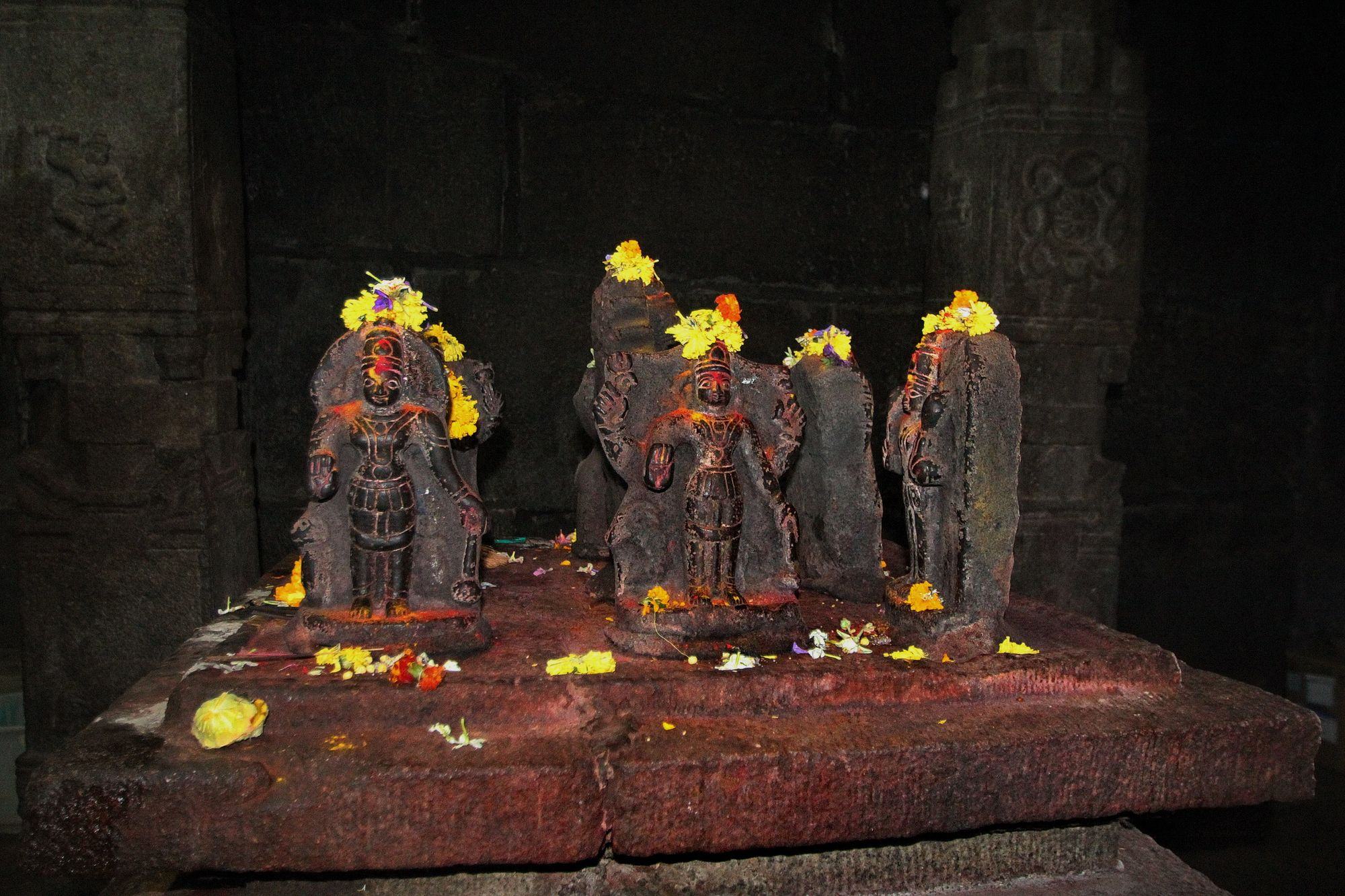
Inside homes, these powerful divinities are venerated as much as they are feared out of a sense of duty. Despite this, a woman told me that she prefers not to draw their respective diagrams because if she ever forgets to, for one reason or another, the outraged gods would show their fury by bringing misfortune to the entire household. Kolam representing the planets do not take on an anthropomorphic form, but are geometrical diagrams often found in puja rooms or on the kitchen altar. Each day of the week has its own diagram and a "seed syllable" or bija, except for Tuesday and Saturday, which are represented by two diagrams which can be chosen freely.
